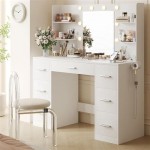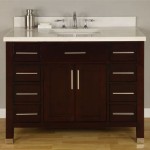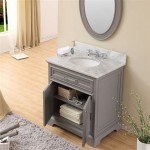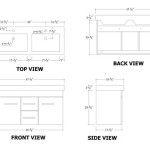Vanity Tops With Sink And Backsplash: A Comprehensive Guide
The bathroom vanity is a focal point of any bathroom design. It combines functionality and aesthetics, providing storage, a surface for daily routines, and a sink for hygiene. Integrating a sink and backsplash directly into the vanity top creates a seamless and visually appealing unit. This article explores the various aspects of vanity tops with sink and backsplash, covering materials, styles, installation considerations, and maintenance tips.
Materials Used for Vanity Tops
The choice of material significantly impacts the durability, appearance, and cost of a vanity top with a sink and backsplash. Common materials include natural stone, engineered stone, solid surface, and laminate.
Natural Stone: Granite and marble are popular natural stone options for vanity tops. Granite is known for its durability, heat resistance, and unique patterns. It is a porous material and requires sealing to prevent staining. Marble offers a luxurious appearance with its veining and smooth texture. It is softer than granite and more susceptible to etching and scratching, also requiring regular sealing.
Engineered Stone: Quartz is a leading engineered stone composed of quartz crystals and resin binders. It is non-porous, highly resistant to stains, scratches, and heat, and requires minimal maintenance. Quartz is available in a wide range of colors and patterns, including those that mimic natural stone. Other engineered stone options include solid surface materials, often made from acrylic or polyester resins. These are non-porous, seamless, and can be molded into various shapes and sizes. They are less resistant to heat than quartz but are renewable and repairable.
Laminate: Laminate vanity tops consist of a thin layer of decorative plastic bonded to a particleboard or MDF core. Laminate is an affordable option available in numerous colors and patterns. It is water-resistant but can be damaged by prolonged exposure to moisture or heat. Edges and seams are potential weak points that may require extra sealing.
Other Materials: Less common but still viable options include concrete, tile, and wood. Concrete offers a modern, industrial aesthetic, while tile provides design flexibility. Wood adds warmth and natural beauty but requires careful sealing and maintenance to prevent water damage.
Styles and Design Considerations
Vanity tops with sinks and backsplashes are available in a wide range of styles to suit different bathroom aesthetics. The design should complement the overall bathroom décor, considering the size, shape, and layout of the space.
Integrated Sinks: Integrated sinks are molded directly into the vanity top, creating a seamless surface. This design eliminates the need for separate sink mounting and reduces the risk of water leakage. Integrated sinks can be made from solid surface, quartz, or cast polymer, offering a clean and modern look.
Undermount Sinks: Undermount sinks are installed below the vanity top, creating a smooth transition from the countertop to the sink basin. This style is popular for its easy cleaning and contemporary appearance. Undermount sinks can be paired with various vanity top materials, including natural stone, engineered stone, and solid surface.
Vessel Sinks: Vessel sinks sit on top of the vanity, acting as a decorative element. This style adds visual interest and can be paired with various vanity top materials, though it's often used with solid wood or stone slabs. Installing a vessel sink requires careful consideration of the faucet height and placement to ensure comfortable use.
Backsplash Designs: The backsplash protects the wall behind the vanity from water splashes and adds a decorative element to the space. Backsplashes can be made from the same material as the vanity top or from contrasting materials such as tile, glass, or metal. The height of the backsplash can vary depending on the design and functional requirements.
Color and Pattern: The color and pattern of the vanity top and backsplash should complement the overall bathroom design. Neutral colors such as white, gray, and beige are versatile and work well with various styles. Bold colors and patterns can add personality to the space but should be used judiciously. Veining patterns, solid colors and other styles can affect the complexity and cost of the material.
Installation and Maintenance
Proper installation is crucial for the longevity and performance of a vanity top with a sink and backsplash. It also is vital for ensuring that you can keep it clean in the future. Professional installation is recommended, especially for heavy materials such as natural stone. Regular maintenance is essential to keep the vanity top looking its best and preventing damage.
Installation Process: Installing a vanity top involves several steps, including measuring the space, preparing the sub-base, installing the sink and faucet, and sealing the edges. The sub-base should be level and sturdy to support the weight of the vanity top. The sink and faucet should be installed according to the manufacturer's instructions. The edges of the vanity top should be sealed with caulk to prevent water penetration.
Sealing Natural Stone: Natural stone vanity tops, such as granite and marble, require regular sealing to protect against stains and water damage. The frequency of sealing depends on the type of stone and the level of usage. A penetrating sealer should be applied according to the manufacturer's instructions after cleaning and drying the surface.
Cleaning and Maintenance: Cleaning the vanity top regularly prevents the buildup of dirt, soap scum, and hard water stains. Use a mild detergent and a soft cloth or sponge to clean the surface. Avoid abrasive cleaners or scouring pads, which can scratch the surface. Wipe up spills immediately to prevent staining. For stubborn stains, use a specialized stone cleaner or a mixture of baking soda and water.
Preventing Damage: Protect the vanity top from heat damage by using trivets or hot pads under hot items. Avoid placing heavy objects on the vanity top, as this can cause cracking. Regularly inspect the edges and seams for cracks or gaps and reseal as needed. Ensure proper ventilation in the bathroom to prevent the buildup of moisture, which can damage the vanity top.
Addressing Specific Issues: Different materials have different weaknesses. For example, laminate is susceptible to peeling or bubbling around the edges if exposed to prolonged moisture. Solid surface materials can be scratched or stained by harsh chemicals. Understanding the properties of the chosen material is essential to addressing specific issues that may arise.
Selecting a vanity top with a sink and backsplash requires careful consideration of the material, style, installation, and maintenance requirements. By understanding these aspects, individuals can make informed decisions that contribute to a functional and aesthetically pleasing bathroom design.

Montary 37 Inch Marble Vanity Top With Ceramic Sink Backsplash White Carrara Engineered Stone Countertop For Bathroom Kitchen Cabinet Only

Yasinu Olive 48 In W X 22 D Quartz Vanity Top Calacatta White With Rectangle Single Sink Included Backsplash Sidesplash Yn2348cq The Home

49x22 Bathroom Stone Vanity Top White Marble Sink W 3 Faucet Hole Back Splash

Bathroom Countertops Backsplashes Modern

Yasinu Olive 48 In W X 22 D Quartz Vanity Top Calacatta White With Rectangle Single Sink Included Backsplash Sidesplash Yn2348cq The Home

Backsplash Bathroom Vanities Vanity Tops At Com

Medunjess 49 Bathroom Vanity Top With Backsplash Wall Mounted Bathro Stone Bathtubs Your Reimagined

37 X 22 Bathroom Stone Vanity Top With Under Mount Ceramic Sink And Backsplash

Boyel Living 37 X 22 Bathroom Vanity Top White Carrara Natural Marble Single Sink Countertop With Backsplash Side Splash Straight Edge

Dropship 37 Inch Marble Vanity Top Bathroom With Undermount Rectangular Middle Sink And 4 Height Backsplash Pre Drilled Faucet Hole Carrara White Veins To Sell At A







